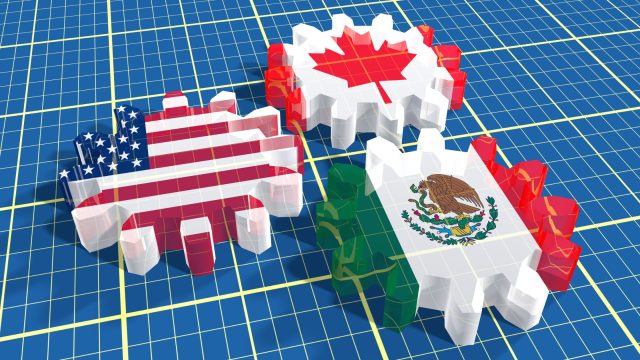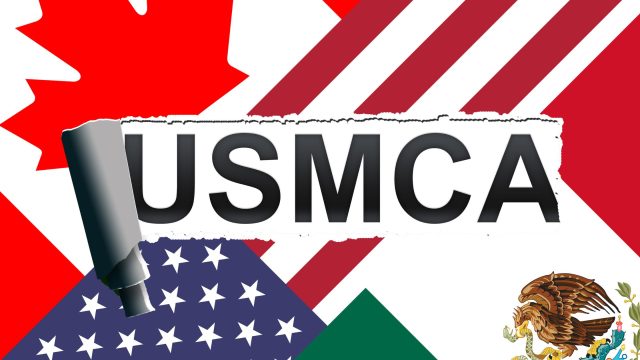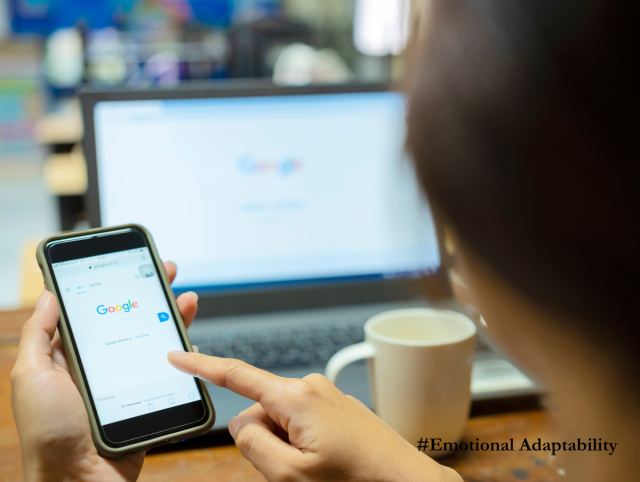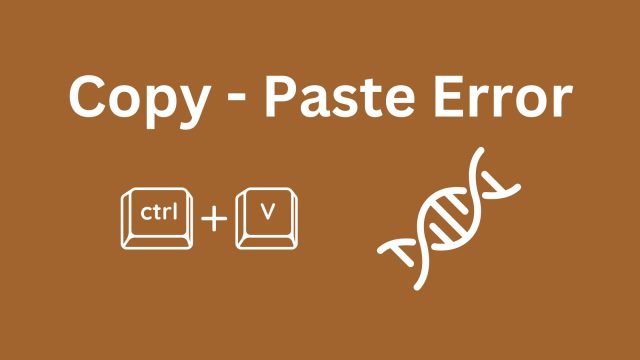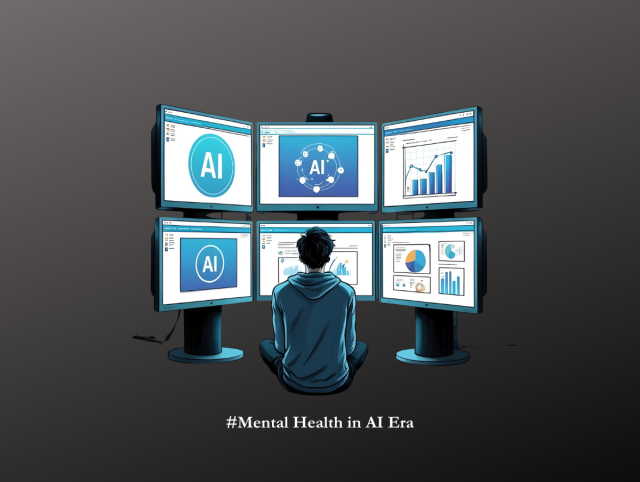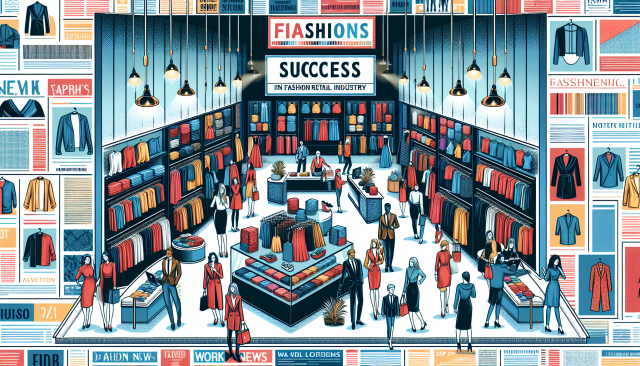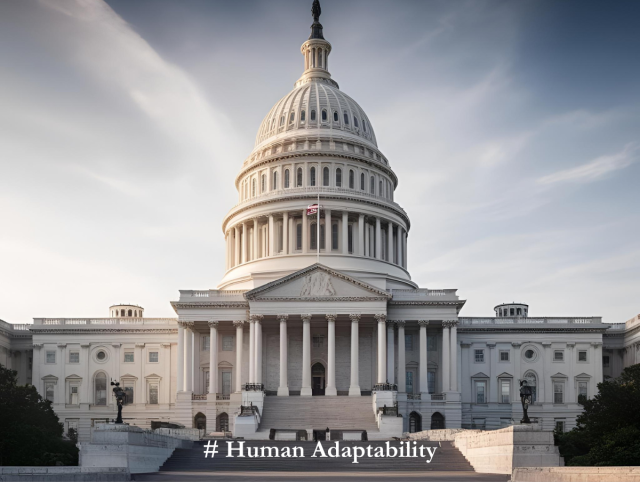Tariff Wars Through the Lens of HAPI: A Deep Analysis
The Human Adaptability and Potential Index (HAPI) offers a unique framework for analyzing not just individual adaptability, but also the adaptability of organizations and even national economies. The recent U.S.-Canada-Mexico-China tariff war provides an excellent case study to examine how economic policies that impose strategic discomfort (such as tariffs) can serve as negotiation tools—and how adaptability plays a crucial role in their effectiveness.
Most analyses of tariff wars focus on economics, trade balances, and political posturing. But applying the Human Adaptability and Potential Index (HAPI) reveals deeper, less obvious lessons about how nations, businesses, and workers adapt (or fail to adapt) to economic disruption.
Through HAPI’s five adaptability dimensions—Cognitive, Emotional, Behavioral, Social, and Growth Potential—we can extract strategic insights that are often overlooked. These lessons aren’t just about trade—they’re about how change, pressure, and uncertainty impact decision-making at all levels.
📌 1. Cognitive Adaptability: The Tariff War is a Real-Time IQ Test for Nations & Businesses
What’s Hidden? Most discussions focus on the immediate economic pain of tariffs, but the deeper question is: How quickly do nations and businesses shift their thinking to turn tariffs into opportunities?
- Highly adaptable economies view tariffs as a temporary constraint and pivot their supply chains, policies, and investments before the damage sets in.
- Less adaptable economies cling to existing trade dependencies, hoping the crisis will pass—only to suffer greater long-term damage.
HAPI Insight: The tariff war is an intelligence test for global economies. The winners are not the ones who “win the war” but the ones who rethink their entire economic strategy before the war ends.
🔍 Hidden Example: China, initially hit hard by U.S. tariffs in 2018, didn’t just retaliate—it accelerated domestic semiconductor production and reduced reliance on U.S. technology. Now, China’s semiconductor industry is growing at five times the global average—a high cognitive adaptability move that will outlast the trade war itself.
✅ Lesson for Businesses & Nations: Don’t just react—rethink the entire system. Businesses that preemptively diversify supply chains, invest in automation, and reduce dependency on volatile markets will outperform those that simply absorb the costs of tariffs.
📌 2. Emotional Adaptability: Market Reactions Expose National & Business-Level Stress Tolerance
What’s Hidden? Markets react violently to tariffs—not necessarily because of actual economic damage, but because of psychological uncertainty. HAPI’s emotional adaptability dimension shows that:
- Countries, businesses, and investors that manage emotional resilience tend to outperform during trade shocks because they make rational adjustments rather than panic-based reactions.
- The real crisis isn’t tariffs—it’s uncertainty. Nations and businesses that can regulate their responses avoid self-inflicted economic damage from overreactions.
HAPI Insight: Tariff wars aren’t just economic events—they are stress tests for national and business decision-making under uncertainty. The best-performing entities are those that handle stress with composure and strategic foresight.
🔍 Hidden Example: The U.S. stock market lost over $1 trillion in value in response to China’s 2018 retaliatory tariffs. But within months, markets rebounded. This suggests the sell-off was an emotional overreaction—not a reflection of real economic damage.
✅ Lesson for Businesses & Nations: The biggest losses in trade wars often come from bad reactions, not actual policies.
- Businesses should focus on strategic resilience rather than making drastic, fear-driven decisions.
- Governments should calibrate their messaging to control market panic and investor confidence.
📌 3. Behavioral Adaptability: Winners Adapt Their Business Models, Not Just Their Suppliers
What’s Hidden? Most companies respond to tariffs by finding alternative suppliers or absorbing the extra cost. But the real game-changers redesign their entire business models to thrive in a world of economic unpredictability.
- Low adaptability companies: Simply switch suppliers or pass costs to consumers—a temporary fix that erodes competitiveness.
- High adaptability companies: Use tariffs as a forcing function to rethink pricing models, automation strategies, and even vertical integration.
HAPI Insight: Companies that see tariff wars as a push toward reinvention, not just a logistical challenge, will dominate in the long run.
🔍 Hidden Example: After Trump’s steel and aluminum tariffs, many U.S. manufacturers suffered. But Tesla used the crisis to vertically integrate more of its supply chain, insulating itself from future tariff shocks. This not only reduced costs but made Tesla more self-sufficient—something its competitors failed to do.
✅ Lesson for Businesses & Nations: Instead of just finding a workaround, ask:
- Can we redesign our business model to be less dependent on global trade uncertainty?
- Can we use automation to offset rising costs?
- Can we create local supply chains that give us long-term resilience?
📌 4. Social Adaptability: Nations That Build Alternative Alliances Will Outlast the Trade War
What’s Hidden? Tariff wars often damage old alliances—but they also create new ones. Nations that adapt socially by forging new trade agreements emerge stronger.
- The U.S., Canada, and Mexico are locked in economic conflict—but Canada and Mexico have quietly expanded trade with the EU and Asia, insulating themselves from future U.S. pressure.
- China, faced with U.S. tariffs, strengthened trade ties with the European Union and Belt & Road Initiative partners—reducing dependence on American exports.
HAPI Insight: Tariff wars aren’t just about who “wins” the trade dispute. The real winners are those who diversify their economic relationships fastest.
🔍 Hidden Example: After Brexit, the UK lost trade privileges with the EU—but instead of fighting it, it aggressively negotiated new trade deals with Australia, Japan, and India. This social adaptability move softened the blow and positioned the UK for future economic shifts.
✅ Lesson for Businesses & Nations: The best way to fight a tariff war is to make yourself indispensable elsewhere.
- Businesses should expand into new international markets before a crisis forces them to.
- Nations should strengthen diplomatic & economic ties proactively rather than reactively.
📌 5. Growth Potential: Tariff Wars Create Winners and Losers—But Not in the Way You Think
What’s Hidden? Tariff wars look like zero-sum battles where one side “wins” and the other “loses.” But HAPI’s Growth Potential metric shows that the real winners are the ones who use the crisis to invest in the future.
- Countries that invest in new industries (AI, green energy, advanced manufacturing) will turn today’s pain into long-term dominance.
- Companies that see trade wars as a signal to reinvent themselves will surpass competitors who wait for stability.
HAPI Insight: The real winners of tariff wars won’t be decided during the war. They’ll be decided five years after—based on who invested in self-sufficiency, innovation, and alternative markets.
🔍 Hidden Example:
- India used U.S.-China tensions to expand its semiconductor industry. Now, with U.S. companies looking for alternatives to China, India is set to benefit from long-term chip manufacturing investments.
- Mexico is rapidly becoming a global manufacturing hub as companies shift production away from China. Mexico didn’t “win” the trade war—but it positioned itself to benefit from it.
✅ Lesson for Businesses & Nations: Tariff wars don’t just redistribute existing wealth—they create new winners. The key question isn’t just “How do we survive tariffs?” but “How do we position ourselves for long-term dominance?”
Now Let’s Analyze Tariff Wars Through the Lens of HAPI: Who’s Adapting, Who’s Struggling, and What Comes Next?
In any high-stakes negotiation—whether in business, diplomacy, or trade—the key to success isn’t just raw power. It’s adaptability. The current U.S.-Canada-Mexico-China tariff war isn’t just a clash of policies; it’s a real-world test of economic resilience, strategic thinking, and long-term vision.
To assess how well each country is navigating this turbulence, we’re applying the Human Adaptability and Potential Index (HAPI). This five-dimensional adaptability model evaluates:
1️⃣ Cognitive Adaptability – Can they rethink strategies in real time?
2️⃣ Emotional Adaptability – How well are they handling uncertainty?
3️⃣ Behavioral Adaptability – Are they making practical adjustments?
4️⃣ Social Adaptability – Can they strengthen new partnerships?
5️⃣ Growth Potential – Are they investing in long-term advantages?
Each country is facing unique challenges—but also uncovering new opportunities. Let’s break down who’s adapting, who’s struggling, and what it means for the future.
🇺🇸 United States (HAPI Score: 72/100) – Strategic, but at What Cost?
The U.S. is using tariffs as a weapon in global trade negotiations, betting that short-term pressure will yield long-term gains. But is this strategy sustainable?
🧠 Cognitive Adaptability – 75
✅ Strength: The U.S. is actively rethinking its supply chain reliance on China, incentivizing domestic production through measures like the CHIPS Act (to boost semiconductor manufacturing).
❌ Weakness: The approach remains largely reactive—rather than fully restructuring its economic model, the U.S. is still relying heavily on pressure tactics.
💢 Emotional Adaptability – 60
✅ Strength: The U.S. government maintains a strong stance in negotiations, avoiding panic-driven reversals in trade policy.
❌ Weakness: Markets are highly reactive, with stock volatility triggered by each new tariff announcement. The government has not effectively controlled economic uncertainty, leading to self-inflicted instability.
🔄 Behavioral Adaptability – 65
✅ Strength: Some industries (like semiconductors, clean energy, and AI) are adapting quickly by reshoring production.
❌ Weakness: Many other sectors remain reliant on Chinese imports, meaning tariffs increase costs without clear alternatives in place.
🤝 Social Adaptability – 70
✅ Strength: The U.S. is actively strengthening trade ties with India, Vietnam, and EU nations to reduce reliance on China.
❌ Weakness: Strained relations with Canada and Mexico due to aggressive tariff policies could weaken North America’s economic cohesion in the long run.
📈 Growth Potential – 90
✅ Strength: The U.S. is investing heavily in next-generation industries (AI, renewables, advanced manufacturing), ensuring long-term competitiveness.
❌ Weakness: If trade conflicts escalate further, businesses may hesitate to invest due to regulatory uncertainty.
🔵 Verdict: The U.S. is playing a high-risk, high-reward game. It has long-term vision, but needs to stabilize market reactions and ensure tariffs don’t backfire by straining alliances.
🇨🇳 China (HAPI Score: 80/100) – Turning Pressure into Strength
China is no stranger to economic pressure, and it’s responding to tariffs by accelerating self-sufficiency and expanding its global trade network.
🧠 Cognitive Adaptability – 85
✅ Strength: China learns fast—rather than simply retaliating, it is reshaping its entire economy by boosting domestic tech innovation.
❌ Weakness: Some industries (e.g., export-driven manufacturing) still depend heavily on global markets, making them vulnerable to future trade restrictions.
💢 Emotional Adaptability – 75
✅ Strength: Unlike past economic crises, China has remained steady, avoiding panic-driven policy shifts.
❌ Weakness: Investor confidence is shaky, with foreign companies hesitating to invest due to political tensions and regulatory uncertainty.
🔄 Behavioral Adaptability – 80
✅ Strength: China is rapidly expanding its semiconductor, electric vehicle, and AI sectors, reducing reliance on U.S. imports.
❌ Weakness: Some Chinese companies still rely on U.S. technology, creating a transition period of vulnerability before full self-sufficiency is achieved.
🤝 Social Adaptability – 90
✅ Strength: China is strengthening trade with the EU, Latin America, and the Belt & Road Initiative, reducing its dependence on the U.S.
❌ Weakness: Tensions with Western economies persist, making long-term diplomatic stability uncertain.
📈 Growth Potential – 85
✅ Strength: China is turning the tariff war into an industrial transformation, ensuring that it emerges stronger over the next decade.
❌ Weakness: Future growth depends on successfully reducing dependence on foreign technology.
🔴 Verdict: China is playing the long game, using tariffs as motivation to accelerate economic independence. However, foreign investor uncertainty remains a key risk.
🇨🇦 Canada (HAPI Score: 60/100) – Caught in the Crossfire
Canada, heavily reliant on the U.S. for trade, is struggling to find a proactive strategy amid shifting economic policies.
🧠 Cognitive Adaptability – 55
✅ Strength: Canada recognizes the risks of overdependence on U.S. trade policy and is exploring new economic strategies.
❌ Weakness: The response has been mostly reactive, lacking a clear long-term industrial transformation plan.
💢 Emotional Adaptability – 70
✅ Strength: The Canadian government has avoided aggressive retaliation, maintaining economic stability.
❌ Weakness: Businesses remain uncertain about future trade policies, leading to delays in investment decisions.
🔄 Behavioral Adaptability – 50
✅ Strength: Some industries, like natural resources and technology, are diversifying trade partners.
❌ Weakness: Heavy reliance on U.S. trade remains a long-term risk if policies continue to fluctuate.
🤝 Social Adaptability – 65
✅ Strength: Canada is expanding trade relationships with the EU and Asia.
❌ Weakness: Still too dependent on the U.S. for economic stability, limiting flexibility.
📈 Growth Potential – 60
✅ Strength: Canada has strong economic fundamentals, but needs bolder investment in emerging industries.
❌ Weakness: A slow adaptation rate could reduce competitiveness over time.
🟠 Verdict: Canada needs to take a more aggressive approach to diversification or risk becoming collateral damage in the tariff war.
🇲🇽 Mexico (HAPI Score: 85/100) – The Silent Winner
Mexico is quietly emerging as a top global manufacturing hub, benefiting from U.S.-China tensions.
🧠 Cognitive Adaptability – 80
✅ Strength: Mexico is positioning itself as an alternative to China for U.S. supply chains.
❌ Weakness: Some economic policies still need to be adjusted to fully capitalize on this shift.
💢 Emotional Adaptability – 80
✅ Strength: Mexico has avoided market panic, keeping investor confidence stable.
❌ Weakness: Political uncertainty could affect long-term economic momentum.
🔄 Behavioral Adaptability – 90
✅ Strength: Mexico is expanding its manufacturing capacity rapidly, attracting investment from U.S. companies.
❌ Weakness: Infrastructure development needs to keep pace with rising demand.
🤝 Social Adaptability – 85
✅ Strength: Mexico is strengthening trade ties with Europe and Asia, increasing resilience.
❌ Weakness: Still highly dependent on U.S. trade policy shifts.
📈 Growth Potential – 90
✅ Strength: Mexico is set to become a key global manufacturing player, beyond just U.S. trade needs.
🟢 Verdict: Mexico is using the tariff war as a growth accelerator, proving that adaptability creates opportunity.
🔮 Final Thought: Tariff Wars Aren’t Just About Trade—They’re an Adaptability Test
HAPI analysis shows that tariff wars are more than just economic disputes—they’re stress tests for adaptability at national and business levels.
🚀 The real winners will be the ones who: ✅ Pivot supply chains & business models before the crisis peaks. ✅ Maintain emotional control to avoid panic-driven losses. ✅ Use social adaptability to build new trade relationships. ✅ Invest in long-term industries rather than just surviving short-term pain.
🔍 The question isn’t just “Who wins the trade war?”—it’s “Who adapts best to the next one?”
















